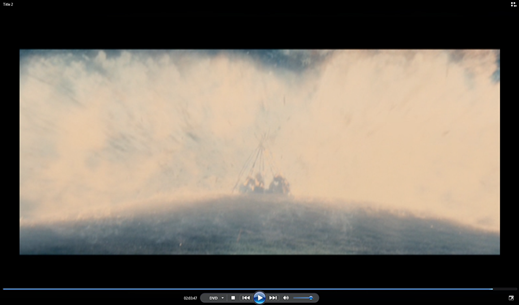Objective: To chose a scenario and film a sequence with an implied meaning with any number of shots but no longer than 90 seconds.
For this assignment I have chosen:
Action Somebody chooses a drink Implied Meaning One of the drinks is poisoned.
I have my friends Julie and Cavan helping me with the acting and while I am starting with a script and storyboard, this usually is flexible with suggestions and ideas from the set.
Here is my basic script and story board:
Frame/shot 01
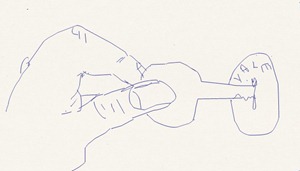
Man arrives home: close up of key unlocking door.
Frame/shot 02
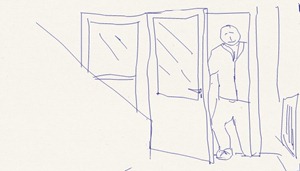
Medium shot of man opening door and stepping inside
Frame/shot 03
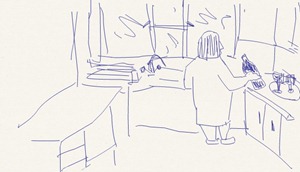
Medium shot of woman pouring drinks in kitchen, “Hello darling, just pouring us a drink”
Man: “Just what I need, I’m exhausted!”
Frame/shot 04
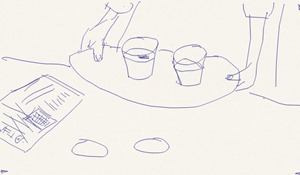
Closer shot of woman placing tray on table. Zoom in on the lipstick smudge.
Frame/shot 05
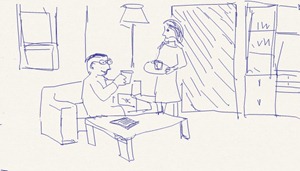
Man picks up smudged glass,
Woman: “Oh dear, here have this one I’ll get a clean glass” Man takes the other drink, woman goes to kitchen.
Frame/shot 06

Woman washes glass;
Sounds off: Thud and a chink, the man has fallen. Woman looks over her shoulder and smiles to herself.
Frame/shot 07

Down shot of man’s legs sticking out from behind the coffee table with a spilled drink.
Either a pan up to the woman dialling a mobile phone or a separate shot:
Frame/shot 7A
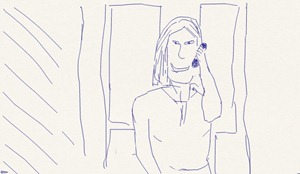
Woman is speaking to the emergency services, “Yes. I’d like to report an accident………………”
Having recorded the sequence and put together a rough edit, I couldn’t find any other way of sequencing the shots to make any different sense of it. I finalised the edit as shown below.
Evaluation
On the whole, I am pleased with the way this came together. I had the idea initially working on the premise that whichever drink was chosen, the poisoned one or the dirty glass, the poisoner would succeed by taking away the safe drink if necessary. The implication is not obvious until the sound of the body hitting the floor is heard and not confirmed until the body is seen behind the table.
I was pleased with the opening shots, starting outside and filming from inside as the man entered gives a nice flow. Shot 3 was not so successful, Julie should have been pouring drinks as Cavan called “I’m home”. She paused until he spoke which was a mistake. Also I didn’t leave enough time for the shot and cut too soon. As it was I had to edit out my calls from the audio track from the start and end.
Shot 4 worked quite well although I did depart from the storyboard/script here. The lipstick smudge on the glass wasn’t really clear enough so we decided to just refer to it. I think that was perfectly OK and made the point. It would have been good if Julie had said “You have mine” rather than assuming Cavan would take the second drink. Julie and Cavan are quite good at ad libbing. Perhaps I shouldn’t rely on this at the expense of losing meaning in the script.
Shot 5 is again too short. I had to edit out my calls again. We forgot to film Julie’s reaction to the sound effect of Cavan falling i.e. a knowing smile as she washed the glass. This makes the sound a little ambiguous although the reason for it is shown in the next scene. Because this take was so short I inserted a fade to and from black, to signify time passing. There were several ideas for the final scene as indicated in the story board but in the end, I combined the two ideas by panning up from the body to Julie speaking on the phone in a calm detached manner showing that she had planned it all along – or had she? The ambulance siren over the credits rounded the act off nicely.
My own skills and understanding:
- Working with actors is great fun but I do need to balance their needs with mine. I was conscious that these people had given up a couple of hours of their time to help me so I was rushing a bit as I knew they had things to do. Less haste, more speed.
- Panning and zooming – more practice needed. I need to loosen off the fluid tilt head on my tripod a little more and practice slow, smooth panning and zooming!
- Planning and preparation – I need more. Because these sequences are so short I have tended to rely on just the storyboard/script and my memory to shoot with. Perhaps for the remaining assignments I will make detailed notes for each shot so I don’t forget things. Working on the premise that it is always better to have too much and leave it on the cutting room floor ………………
Assgnt03 Creating Meaning from Richard Down on Vimeo.






